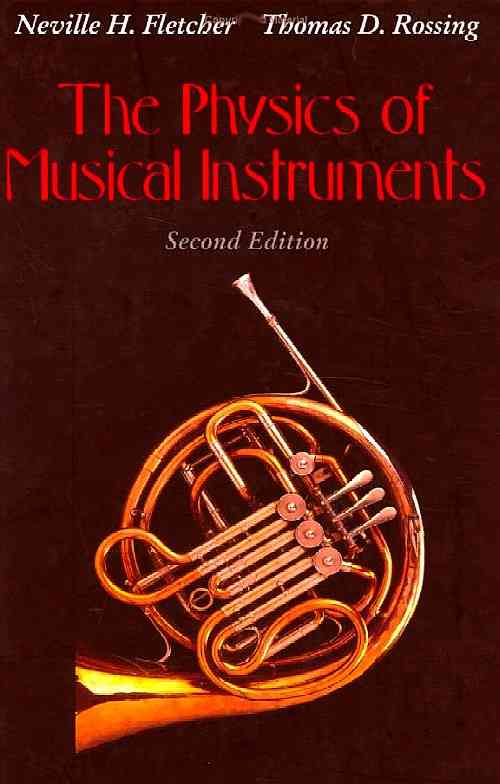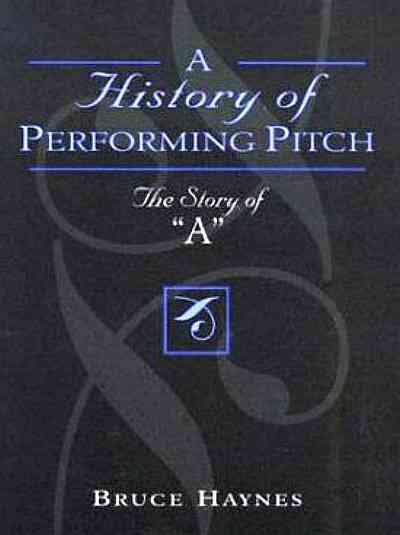
H aydn tells us in his letter that he had to deal with more than one pitch. It seems that ‘Viennese Pitch’ was a recognized standard and that it was considered relatively high. The date of Haydn’s letter suggests that the pitch rose in Vienna in the late 1750s or early 1760s ... One thing is clear: there was no such thing as ‘Classical Pitch’. Different standards existed at different places.”
— Bruce Haynes, Mozart and the Oboe, p. 47.
T oday most players think in 440-415-392 Hz pitch categories, not knowing that the so-called baroque pitch 415 is not older than 30 years, when two harpsichord builders introduced the transposing keyboard. There is a strong evidence that most early 18th century bassoons are much lower than 440 Hz, but I found as many on 408 or 421 Hz as on every other pitch around there. The 415 Hz is a good compromise, since one has to agree on something in a mostly free-lance music scene. But if you get to build a strong, stable ensemble, you can do it differently. A good example is Harnoncourt’s Concentus Musicus. They are playing on 421 Hz since 35 years, just because Jurg Schaetflein’s oboe was happy there.”Following my recent post that wondered about Dallapiccola’s tuning, two CMT readers asked questions about baroque tuning, both specifically inquiring about the historical appropriateness of A = 415 Hz for works by Haydn. A415 is about a semitone lower than the modern A440.
— Michael Dollendorf, Bonn and San Francisco, International Double Reed Society.
One of the question-askers went further and opined that the matter is moot anyhow inasmuch as the answer would depend on the ambient temperature, and we couldn’t possibly know what temperature the rooms were where Haydn composed and performed.
I am no historian; some links below (to Bruce Haynes’s book and others) should prove useful to those of you who care. Haydn’s tuning fork does indeed exist. So does Handel’s. Careful measurements have been made, of their dimensions and of their pitches—at unspecified temperature, presumably ordinary ‘room temperature’ (about 20 °C).
I do know a thing or two about physics and engineering. And I can say without doubt that, unless Haydn were playing either on Pluto or on Mercury, the pitch of that stationary tuning fork would have been (to a likewise stationary listener) imperceptibly different from its nominal 422.5 Hz. The pitch of a fork simply doesn’t change very much, even through wide excursions in temperature.
Here is the equation that very closely approximates the dependence of frequency upon the dimensions, for a tuning fork that has cylindrical tines:

where
l is the length of the tines;
E is the Young’s modulus of elasticity of the material the tines are made of (210 • 109 N/m² for tempered steel at 20 °C);
ρ is the density of the material of the tines (7.8 gm/cm³ at 20°C); and
R is the radius of the tines.
And here is the equation for forks that have ‘square’ tines (like the Kohl fork in the photo above), where A is the cross-sectional area of the tines looking down their shafts:

These equations are simplifications. They totally ignore the many harmonics that are emitted when the metal is struck. (Those overtones rapidly die out and only the fundamental is left.) They also ignore any multi-axial anisotropy and any lengthwise or cross-sectional inhomogeneities that result from the particular method of manufacture or heat-treatment or finishing of the fork. They ignore any nonlinear or anelastic behavior.
Finally, here is the equation for how the length changes as a function of temperature in ‘normal’ temperature ranges:

where the thermal coefficient of expansion α is 1.2 • 10-5 °C⁻¹ at 20 °C.
Once tuned, a tuning fork’s frequency does vary slightly with changes in E(T), l(T), and ρ (T), according to these equations. But if Haydn’s rooms were at 10 °C, the fork would only have been about 1.4 cents sharp, and if Haydn’s rooms were at 30 °C, the fork would only have been about 1.4 cents flat—too small a difference to hear.

Besides historical tuning forks, a lot of what we know of historical tunings comes from measurements of wind instruments—organ pipes, oboes, flutes. Yes, of course, the tuning of these is adjustable, but the scratches and markings on the organ pipes—the traces of forensic evidence as to the dimensions these were adjusted to when actually in use—and the comparative dimensions of the set of pipes (or, in the case of the flutes, oboes, and bassoons, the distances between the holes) provide ample guidance as to the actual historical pitch. Tuning forks used by orchestras between 1750 and 1820 mostly had a frequency of A = 423.5 Hz, although there were many forks, many slightly different pitches.
- 1711: John Shore’s fork, A423.5
- 1714: Strasbourg Cathedral organ A391.0
- 1715: English tenor fork, A419.9
- 1722: Dresden’s Catholic church organ, A415.0
- 1750: London, inscribed ‘Common music shop fork.’ A424.3
- 1751: Handel’s tuning fork; the box which contains the fork bears the inscription: ‘This pitchfork was the property of the Immortal Handel and left by him at the Foundling Hospital, when ‘The Messiah’ was performed in 1751.’ A422.5
- 1772: Gottfried Silbermann Catholic church in Dresden, A415.0
- 1780: Organ builder Schulz, A421.3
- 1780: Stein’s fork, A422.6
- 1780: Stein’s fork for Mozart, A421.3
- 1780: Organ builder Schulz, A421.3

- Blackstock D. Fundamentals of Physical Acoustics. Wiley, 2000.
- Bolmaro R, Povolo F. Anelastic behaviour of materials under multiaxial strains. J Materials Science 1987; 22: 4158-64.
- Cescotto S, et al. Numerical modeling of metal forming. In Iu V, et al., eds. Computational Methods in Engineering and Science. Taylor & Francis, 2003, p. 27.
- Fletcher N, Rossing T. The Physics of Musical Instruments. 2e. Springer, 2008. (chapter 2)
- Haynes B. Mozart and the oboe. Early Music 1992; 20: 43-63.
- Haynes B. A History of Performing Pitch: The Story of A. Scarecrow, 2002.
- Jorgensen O. Tuning. Michigan State Univ, 1991.
- Karp C. The Pitches of 18th-Century Strung Keyboard Instruments, with Particular Reference to Swedish Material. SMS Musikmuseet, 1984.
- Ledbetter H, Read D. Low-temperature elastic properties of a 300-grade maraging steel. Metallurg Materials Trans 1977; 8: 1805-8.
- Mendel A. On the pitches in use in Bach's time. Musical Quarterly 1955; 49: 471-5.
- Raichel D. The Science and Applications of Acoustics. 2e. Springer, 2006. (esp. Chapter 5)
- Robbins-Landon H. Haydn: Chronicle and Works. Five Volumes. Indiana Univ, 1976. (Vol. 2, p. 82, has information on Vienna tuning)
- Russell D. On the sound field radiated by a tuning fork. Am J Physics 2000; 68: 1139-45. (animated gifs)

You list the frequency of Händel's tuning fork as a' = 423.5 Herz. However, I have read in more than one source that it is actually a C fork, not an A fork. So, those who give the A frequency of that fork in Herz have obviously extrapolated it from Händel's c" = 512 Herz. However, they most likely based this calculation on equal temperament, which is more than unlikely to have been Händel's temperament of choice (knowing that unequal temperaments were still the standard for organs in Britain as much as a century later). I have calculated the a' frequency relative to C512 based on an unequal temperament known to have been used in Britain, and arrived at 428.8 Hz for a' -- and of course, other unequal temperaments would give yet other different frequencies for a'.
ReplyDelete